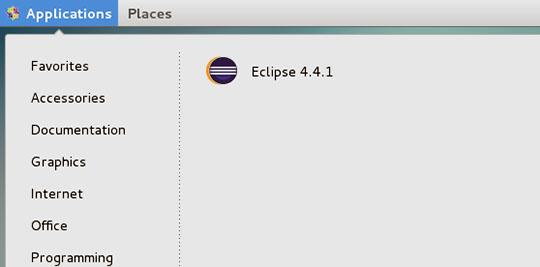
In this tutorial, we will show you how to install Eclipse Luna on CentOS 7. For those of you who didn’t know, Eclipse is an open-source and free multi-language and multi-platform (Windows, Linux, and Mac) software development program that is used to build JAVA-based web applications. It is written in a Java program and can be used to develop Java-based applications and other various plugins, including languages like C, C++, PHP, Perl, Python, Ruby, and Rails framework.
This article assumes you have at least basic knowledge of Linux, know how to use the shell, and most importantly, you host your site on your own VPS. The installation is quite simple. I will show you the step-by-step installation of Eclipse on CentOS 7.
Prerequisites
- A server running one of the following operating systems: CentOS 7.
- It’s recommended that you use a fresh OS install to prevent any potential issues.
- SSH access to the server (or just open Terminal if you’re on a desktop).
- An active internet connection. You’ll need an internet connection to download the necessary packages and dependencies for Eclipse.
- A
non-root sudo useror access to theroot user. We recommend acting as anon-root sudo user, however, as you can harm your system if you’re not careful when acting as the root.
Install Eclipse Luna on CentOS 7
Step 1. First, Install Java-required packages.
yum install java
Check if Java is installed:
java -version
Step 2. Download and Install Eclipse Luna.
Download the latest eclipse package. This guide uses Eclipse IDE for the Java Developers version. Other popular versions are Eclipse IDE for Java EE Developers and Eclipse for PHP Developers. Select also a 32-bit or 64-bit version depending on your system.
Extract Eclipse package (example /opt/):
tar -zxvf eclipse-java-luna-SR1-linux-gtk-x86_64.tar.gz -C /opt
Make a symbolic link to bin directory:
ln -s /opt/eclipse/eclipse /usr/bin/eclipse
Step 3. Create a Gnome desktop launcher.
##nano /usr/share/applications/eclipse.desktop
Add the following lines of code, save and close the file:
[Desktop Entry] Encoding=UTF-8 Name=Eclipse 4.4.1 Comment=Eclipse Luna Exec=/usr/bin/eclipse Icon=/opt/eclipse/icon.xpm Categories=Application;Development;Java;IDE Version=1.0 Type=Application Terminal=0
Step 4. Start Eclipse.
From the Desktop terminal run the following command to launch Eclipse:
eclipse
From Desktop menu Gnome 3 Eclipse 4.4.1:

Congratulations! You have successfully installed Eclipse. Thanks for using this tutorial for installing Eclipse Luna on CentOS 7 system. For additional help or useful information, we recommend you check the official Eclipse website.